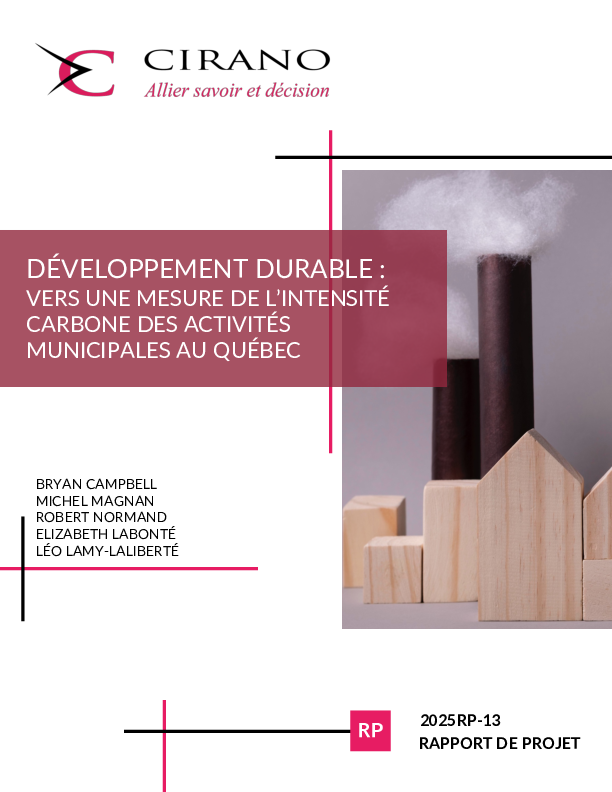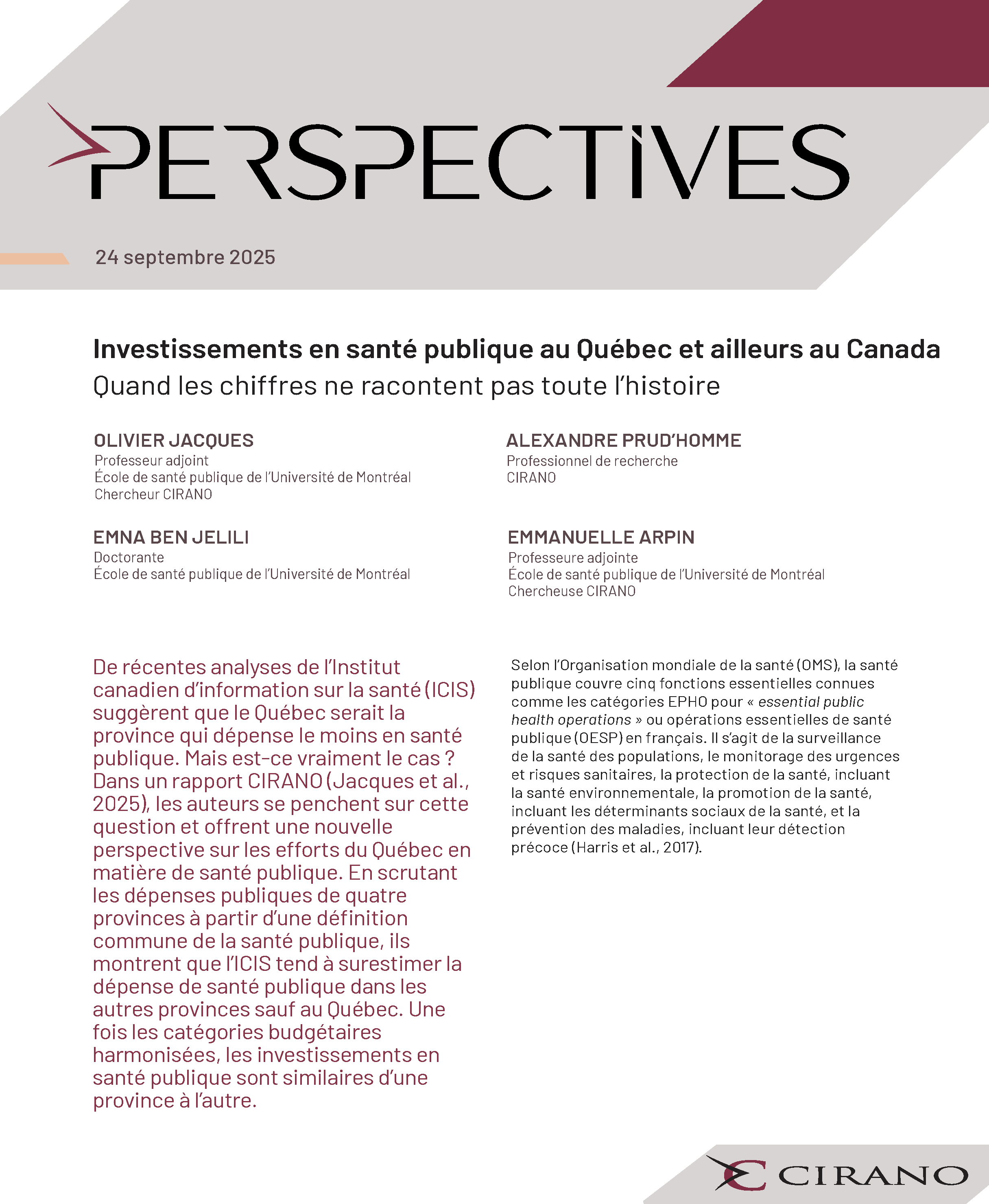Développement durable : Vers une mesure de l’intensité carbone des activités municipales au Québec
According to a recent report by KPMG International, success in achieving global and national carbon neutrality targets depends greatly on cities' climate risk management decisions and actions. According to some estimates, emissions from municipal services account for around 3% of a community's total emissions. The management of carbon neutrality by the municipal administration can have a significant knock-on effect on the population and the private sector in general.
In this report, the authors propose a “dashboard of carbon emissions” resulting from activities specific to the management of a city. This includes Scope 1 emissions, i.e., those directly related to the organization (essentially, emissions resulting from fuel use by municipal vehicles, waste and residual materials management and industrial activities that could be carried out by a city) and Scope 2 emissions, i.e., those resulting from energy consumption (electricity and gas) by an organization's physical infrastructure (buildings). Four cities representative of the major categories of Quebec municipalities were selected: Trois-Rivières, Victoriaville, Varennes and Nicolet.
Their analyses show that carbon intensity per dollar spent is conditional on some strategic choices: use of electricity or natural gas for building heating, use of electric or gas-powered vehicles, selective waste collection and management with or without composting obligation. Other dimensions, such as the size of the municipality, may also have an effect on the carbon intensity of spending, but measuring their impact would have required a larger sample. The authors identify four main issues that could affect the reliability of carbon emissions measurement: 1) the traceability of the carbon intensity of municipal activities through the financial information system; 2) the availability of carbon intensity when municipal activities are outsourced; 3) the conditioning or treatment applied in solid waste or wastewater management; and 4) the accounting classification itself.




